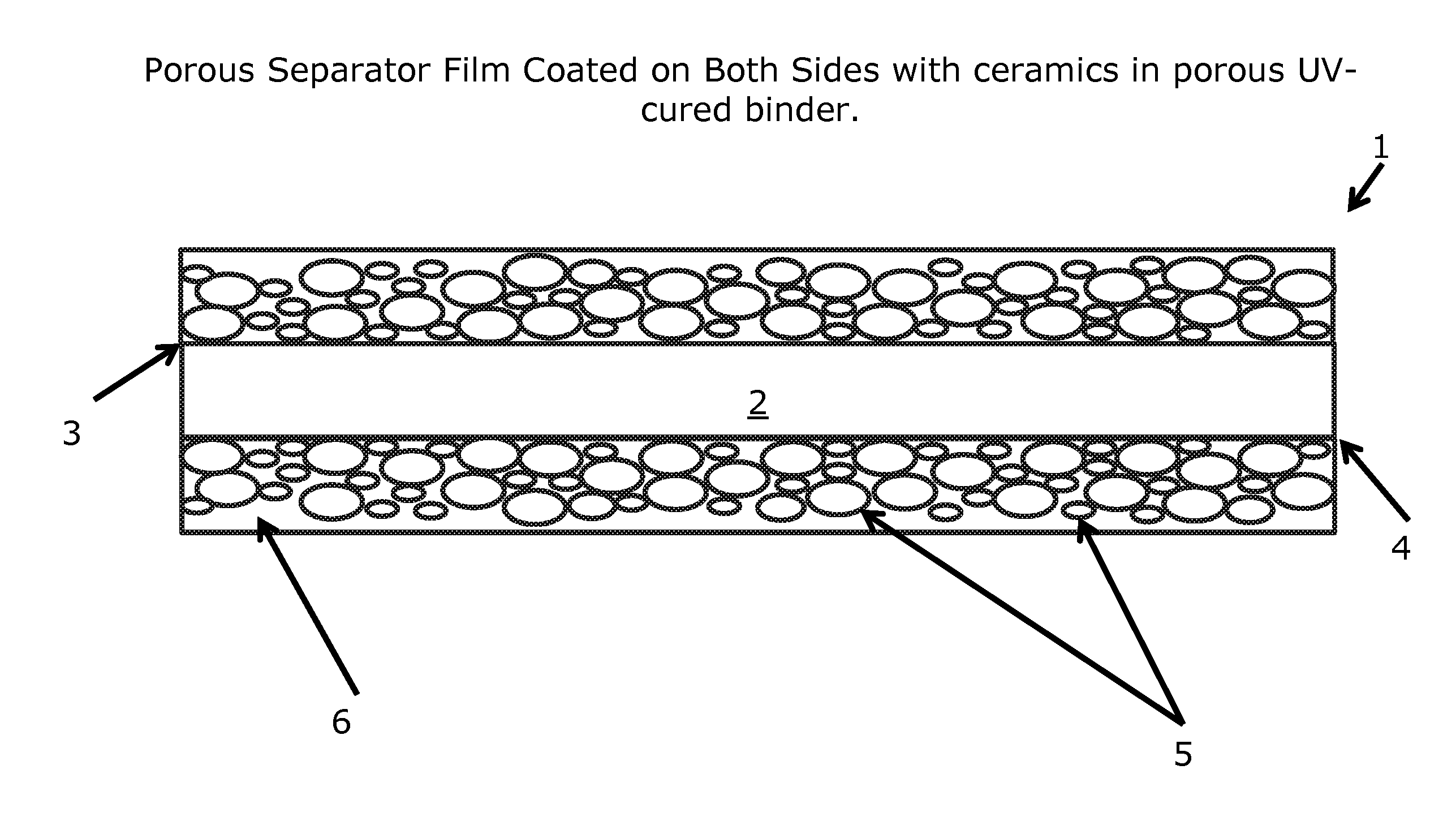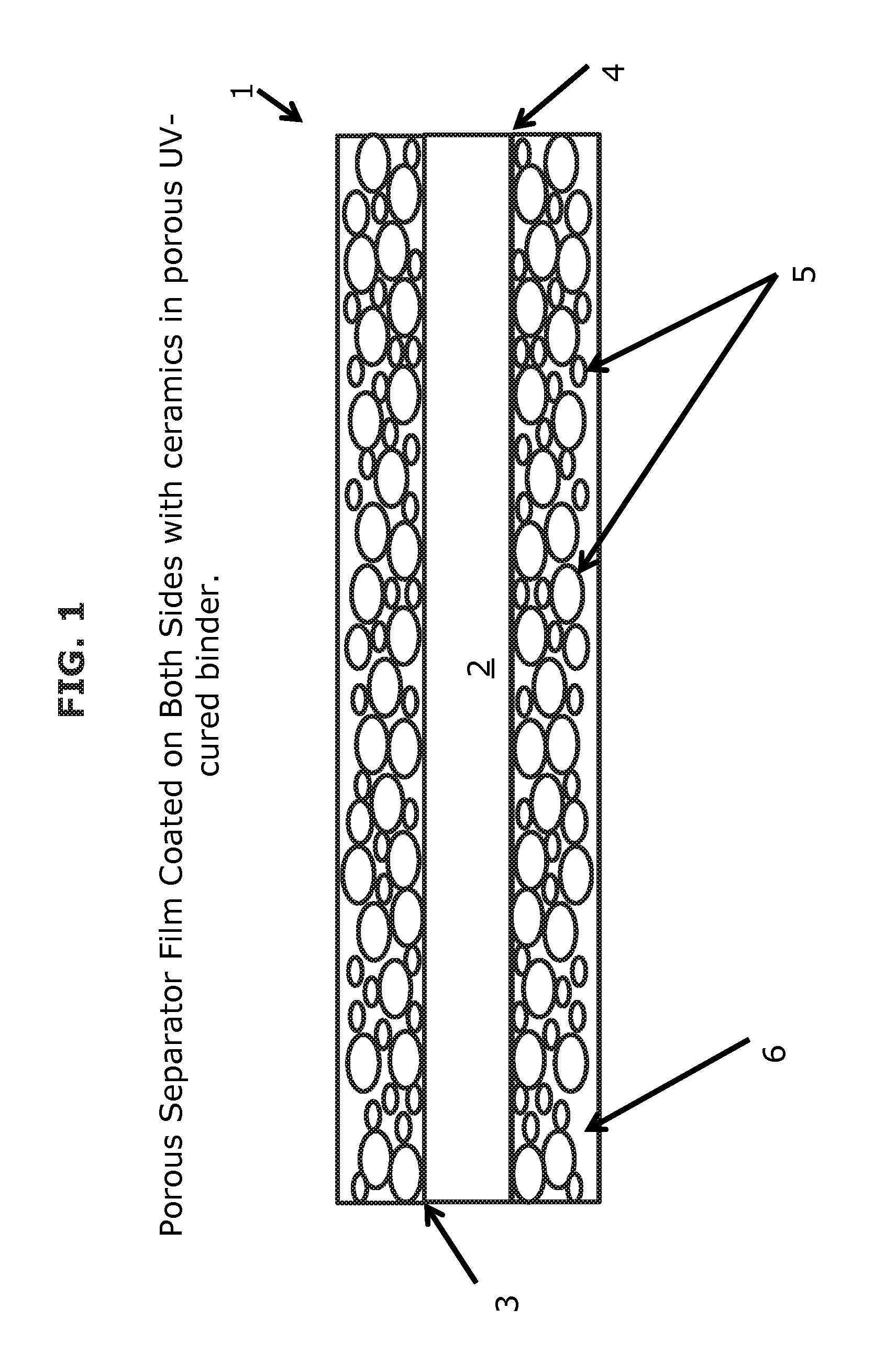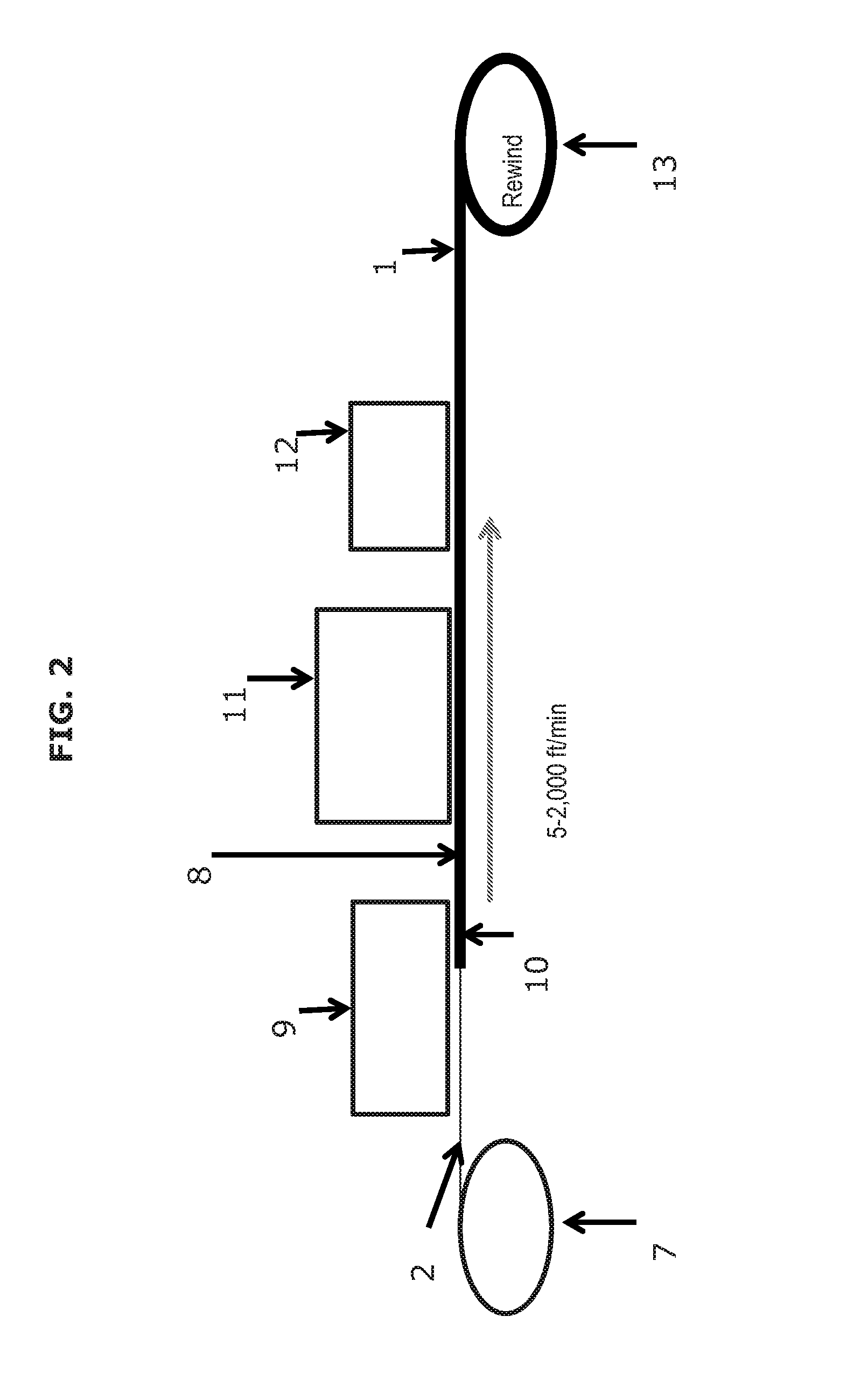Polymer-Bound Ceramic Particle Battery Separator Coating
a technology of ceramic particle and battery separator, which is applied in the direction of cell components, final product manufacturing, sustainable manufacturing/processing, etc., can solve the problems of increased fire risk, battery not working, and pe-pp separators not having heat resistance to remain in pla
- Summary
- Abstract
- Description
- Claims
- Application Information
AI Technical Summary
Benefits of technology
Problems solved by technology
Method used
Image
Examples
example 1
Water-Based, UV-Curable, Aluminum Oxide-Filled Coatings on a Separator
[0134]A water-based UV-curable binder composition was prepared and mixed with aluminum oxide powder in the proportions shown below in Table 1 to form a slurry.
TABLE 1UV-curable, water-based binder with aluminum oxide powderManufac-ChemicalIngredientturerDescriptionWeight %Ucecoat 7689CytecAcrylated16polyurethanedispersion mixtureUcecoat 7699CytecAcrylated16polyurethanedispersion mixtureTego 750WEvonikModified polymer2.2dispersant9038-95-3Altanapolysiloxane0.2defoamerGlycol etherDow ChemicalSolvent2N-methyl-BASFco-initiator0.8diethanolamineIrgacure 500BASFPhotoinitiator1.9Irgacure 819-dwBASFPhotoinitiator0.926R-020212UP2AdvancedAluminum Oxide60Materials,Power, 0.5-1 μmLLCtotal100
[0135]The resulting slurry from Table 1 was applied on a 25-μm microporous PP\PE\PP trilayer separator film designed for use in lithium ion batteries (CELGARD 2325). Single or double sided coatings were made to the various sample separators...
example 2
UV-Curable, Water-Based Urethane Acrylate Coatings with Aluminum Oxide Powder on a Separator
[0142]A UV-curable, water-based urethane acrylate binder composition was prepared and mixed with aluminum oxide powder in the proportions shown below in Table 3 to form a slurry.
TABLE 3UV-curable, water-based urethane acrylatecoating with aluminum oxide powderManufac-ChemicalIngredientturerDescriptionWeight %Neorad R-440DSM NeoResinsDispersed Urethane34.8acrylateTego 750WEvonikDispersing Agent2.2BYK-028BYK ChemieSilicone Defoamer0.2Irgacure 500BASFPhotoinitiator1.9Irgacure 819-WBASFPhotoinitiator0.926R-020212UP2AdvancedAluminum Oxide60.0Materials,Powder, 0.5-1 μmLLCtotal100.0
[0143]The resulting slurry from Table 3 was applied on 25-μm microporous PP\PE\PP trilayer separator film (CELGARD 2325). Single-sided and double-sided patterned coatings were achieved with a 120 lpi trihelical anilox. As in Example 1, the coated separators were tested in a NMC-Lithium metal half-cell. Results in Tables 4...
example 3
UV-Curable, Aluminum Oxide-Filled Rubber Acrylate Coatings on Separator
[0146]A UV-curable composition was prepared and mixed with aluminum oxide powder in the proportions shown below in Table 6 to form a slurry. This highly-filled product contains neither solvent nor water.
TABLE 6UV-curable, acrylated rubber coating with aluminum oxide powderManufac-ChemicalIngredientturerDescriptionWeight %SR307SartomerAcrylated rubber10SR306SartomerAcrylated monomer10SR454SartomerAcrylated monomer12Solsperse 39000NoveonDispersant3.5TPO-LBASFPhotoinitiator0.5Irgacure 1173BASFPhotoinitiator4.026R-020212UP2AdvancedAluminum Oxide60Materials,Power, 0.5-1 μmLLCtotal100
[0147]The resulting slurry from Table 6 was applied on a 25-μm microporous PP\PE\PP trilayer separator film designed for use in lithium ion batteries (CELGARD 2325).
[0148]A continuous porous coating was made to the trilayer separator of Sample #6. In contrast, the trilayer separator of Sample #5 was pattern coated. The trilayer separator o...
PUM
| Property | Measurement | Unit |
|---|---|---|
| Temperature | aaaaa | aaaaa |
| Temperature | aaaaa | aaaaa |
| Temperature | aaaaa | aaaaa |
Abstract
Description
Claims
Application Information
 Login to View More
Login to View More - R&D
- Intellectual Property
- Life Sciences
- Materials
- Tech Scout
- Unparalleled Data Quality
- Higher Quality Content
- 60% Fewer Hallucinations
Browse by: Latest US Patents, China's latest patents, Technical Efficacy Thesaurus, Application Domain, Technology Topic, Popular Technical Reports.
© 2025 PatSnap. All rights reserved.Legal|Privacy policy|Modern Slavery Act Transparency Statement|Sitemap|About US| Contact US: help@patsnap.com



